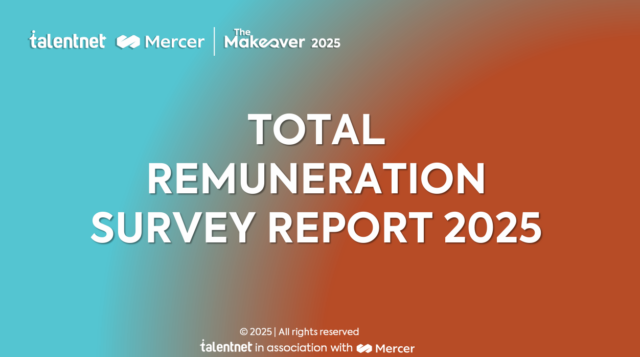Factory Compensation: Why Vietnamese Manufacturers Need Reliable Salary Data

May 20, 2025
Last updated on Oct 9, 2025
In Vietnam's booming manufacturing sector, your greatest asset—and potentially biggest risk—is your workforce. Are your compensation strategies truly safeguarding your growth, or are they an unaddressed vulnerability?

Key takeaways
- Rising wages and fierce competition for skilled labor are defining Vietnam’s manufacturing landscape; ignoring this is a direct risk.
- CEOs must lead the charge in adopting data-driven compensation to make strategic talent and financial decisions.
- Reliable salary data from sources like comprehensive surveys is foundational for attracting talent, reducing turnover, and optimizing labor costs.
- Transforming this data into agile, holistic, and transparent reward strategies provides a clear competitive advantage.
The competition for skilled factory labor in Vietnam is intensifying daily. For CEOs, effectively managing manufacturing compensation is no longer just an HR task; it’s a strategic imperative directly impacting your bottom line and long-term sustainability. This article explores why reliable salary data is indispensable for making winning decisions.
The shifting sands of Vietnamese factory compensation
The manufacturing compensation landscape in Vietnam presents both challenges and opportunities for leaders who understand what’s happening beneath the surface. Four Vietnamese workers compensation facts are reshaping the compensation environment for manufacturers across the country:
- Rising wage trajectory: As of the first quarter of 2025, Vietnam’s manufacturing workers earned an average of VND 8.4 million monthly (approximately US$332). This represents a continued rise in labor costs, further influenced by factors such as the 6% minimum wage increase implemented in July 2024. Consequently, manufacturers in Vietnam continue to face ongoing cost pressure
- Local vs. foreign company gap: Multinational corporations typically pay 31% higher basic salaries than Vietnamese firms, with workforce reports showing this gap widening across career levels—18% more for junior roles, 29% more for professionals, and 36% more for managers.
- Skilled worker shortages: Nearly half (45%) of foreign-invested manufacturers report significant skilled worker shortages, creating intense competition for technical talent.
- Increasing turnover: High turnover, especially among younger workers who stay only 1.7 years on average, undermines productivity and drives up hiring costs. Post-pandemic turnover reached 10-12% annually in many manufacturing sectors.

Why CEOs must personally champion data-driven compensation
The numbers tell a compelling story: manufacturers who treat compensation as a data-driven strategic function consistently outperform those who view it merely as an expense. The impact extends across multiple business dimensions that directly concern the C-suite.
Data drives smarter financial and strategic planning
“Comprehensive salary data provides a valuable source of information for CEOs and HR leaders in making informed business development as well as succession planning decisions.” – Head of Human Capital Solutions, Talentnet Corporation.
Reliable salary benchmarks empower executives to make decisions that reach well beyond the HR department.
When you know exactly where your manufacturing compensation stands relative to competitors, you can allocate budgets more effectively, forecast labor costs accurately, and align workforce investments with strategic priorities. This transforms compensation from a cost center into a strategic planning tool.
Secure top talent and reduce hiring mismatches
In Vietnam’s manufacturing sector, data-backed compensation strategies significantly improve recruitment outcomes. Maya Nguyen, Partner at Page Executive, notes that transparency supported by market salary data helps “attract relevant talent” and “reduce mismatches early in the recruitment process.”
For manufacturing leaders, this means faster hiring cycles and lower onboarding costs. When job postings clearly communicate competitive, market-informed salary ranges, you naturally attract candidates whose expectations align with your offer. This streamlines recruitment and helps secure personnel who can drive production goals without delays.
Mitigate costly turnover by meeting market expectations
Employee retention represents a major challenge for Vietnamese manufacturers. According to the Reeracoen Vietnam survey, nearly 60% of Vietnamese workers consider changing jobs within six months, with competitive pay being the top priority for 58.7% of them.
When experienced operators or technicians leave, production efficiency suffers, quality may decline, and training investments are lost. Data-informed compensation in the manufacturing industry directly addresses this primary driver of employee churn, potentially saving millions in replacement and opportunity costs annually.
Enhance your competitive edge in a tight labor market
The skills gap in Vietnam’s manufacturing sector could leave an estimated 2.1 million jobs unfilled by 2030. Companies using market intelligence to position their factory wages strategically don’t just fill positions—they secure the right talent faster than competitors.
This advantage directly affects your production capacity, quality standards, and ability to meet client deadlines. Electronics technicians and maintenance engineers command progressively higher premiums each year, and only manufacturers with current market data can adjust quickly enough to secure these critical roles before competitors do.

Activating Data Transforming Insights into Competitive Advantage
Converting salary data into tangible business results requires a methodical approach. The most successful Vietnamese manufacturers follow three core strategies that systematically turn market intelligence into workforce stability and competitive advantage.
Leverage comprehensive salary surveys for pinpoint accuracy
Participation in industry-standard manufacturing compensation surveys provides the detailed data needed for effective decision-making. The Talentnet-Mercer Total Remuneration Survey, with over 600 participating companies across 16 industries, gives Vietnamese manufacturers clear benchmarks against industry peers.
This precise benchmarking reveals specific strategies used by market leaders. For instance, while multinational manufacturers pay significantly higher base salaries, many successful Vietnamese companies compete effectively by offering higher variable bonuses—22.6% of salary versus 17.5% at multinational corporations. Without comprehensive survey data, these nuanced competitive insights would remain hidden, putting local manufacturers at a strategic disadvantage.
Design holistic and defensible reward structures
Forward-thinking manufacturers recognize that effective compensation goes beyond base pay. The case of Maxport Limited, a garment factory in Nam Dinh documented by the Fair Labor Association, shows how data-informed restructuring led to a 39% increase in real wages over five years while simultaneously reducing turnover and improving worker satisfaction.
By analyzing productivity metrics and market wage data, Maxport developed a comprehensive salary structure that allowed workers to earn a living wage without excessive overtime. This approach, grounded in reliable salary benchmarks, improved both worker well-being and business outcomes—proving that data-backed compensation strategies can create mutual value.
|
The most effective compensation strategies directly address your specific workforce challenges—using salary data to identify precisely where targeted interventions will yield the greatest impact on retention, productivity, and organizational capability.. |
Implement agile pay strategies and communicate with clarity
Vietnam’s manufacturing labor market changes rapidly, with shifts in minimum wages, inflation rates, and competitive practices requiring ongoing adjustments. Leading companies review external salary data quarterly or bi-annually to make proactive adjustments before turnover occurs.
Transparency in how pay decisions are made, supported by objective market data, builds trust and reduces perceptions of unfairness. Maya Nguyen of Page Executive observes that Vietnam has seen “a notable increase in salary transparency over the past two years.” Manufacturers that clearly communicate how Vietnam factory worker salary data relates to market benchmarks foster a more stable workforce and stronger employer brand.
Companies taking this agile approach often anticipate labor market shifts rather than merely reacting to them—for example, securing workers ahead of peak season by offering small wage premiums when data predicts a labor shortage, giving them a crucial operational advantage over less informed competitors.
For manufacturing leaders in Vietnam, reliable compensation intelligence has become a strategic necessity that directly impacts competitive position. As manufacturers face both wage pressures and fierce competition for skilled labor, companies that use comprehensive salary metrics surveys to inform their manufacturing compensation strategies gain decisive advantages in attracting and keeping talent.
Investing in reliable salary data can transform potential workforce vulnerabilities into strategic strengths that deliver measurable business outcomes through reduced turnover, faster hiring, and optimized labor costs.

Solve your HR problems!
6th Floor, Star Building, 33 Mac Dinh Chi, Saigon Ward, Ho Chi Minh city, Vietnam




